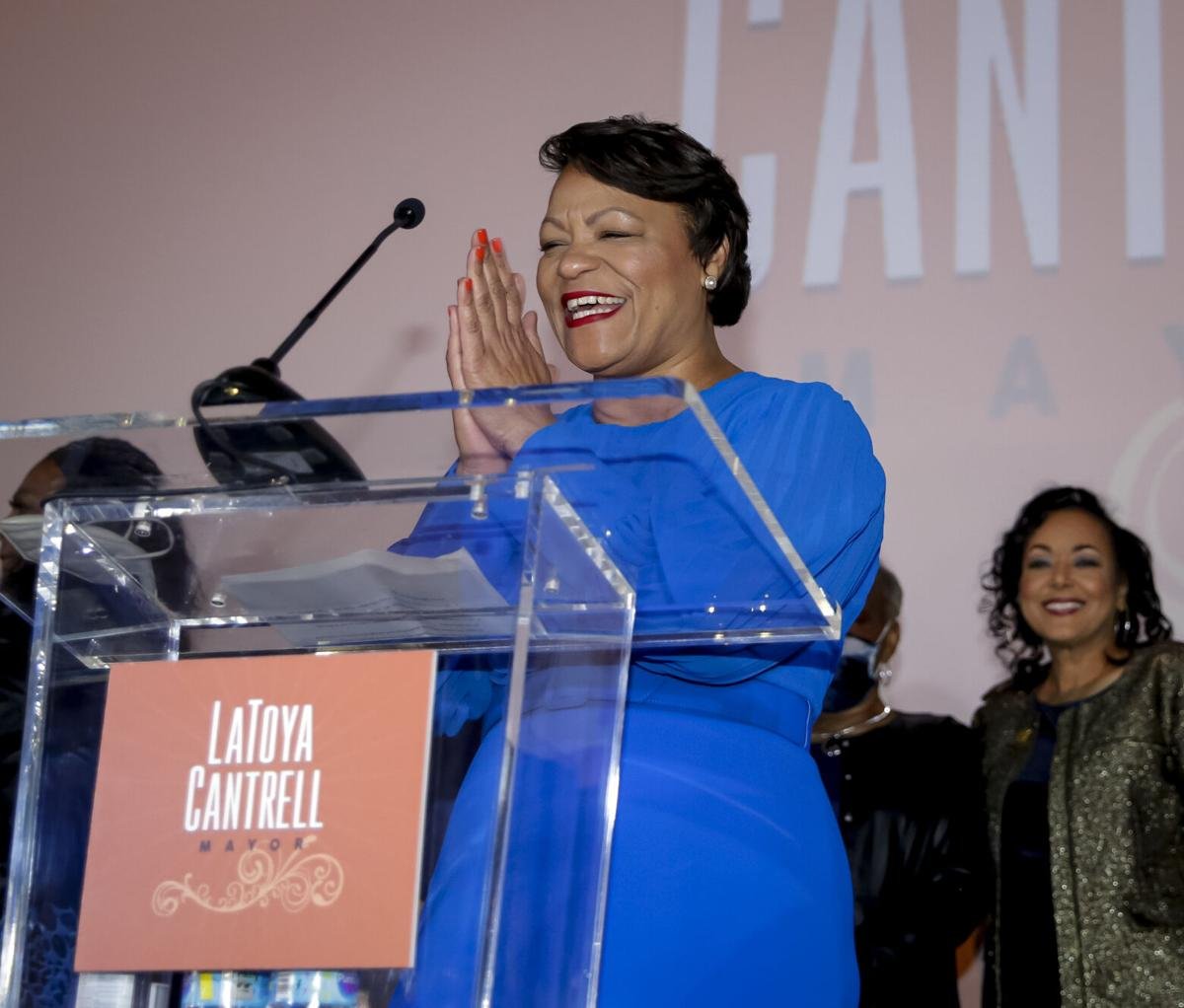Running for office in 2018? Look to New Orleans and LaToya Cantrell for lessons
By Andrew Sullivan and Dr. Silas Lee
Will 2018 be the year of the woman candidate? A glance at the political landscape suggests it’s possible. More than 400 women are seeking seats in Congress, 50 are running for Senate, and more than 75 are exploring Governors seats, according to recent estimates.
New Orleans Mayor-elect LaToya Cantrell, November 2017 (Michael DeMocker, NOLA.com | The Times-Picayune)
These are inspiring numbers. But running is not the same as winning, to state the obvious, and it will require hundreds of well-run campaigns to make an electoral wave reality.
So where should an insurgent candidate look for guidance on running a strong campaign?
We suggest New Orleans, and the playbook of LaToya Cantrell, the city’s mayor-elect. In a city which had never elected a woman mayor, Cantrell won the 18-way October primary by 9 points and the November run-off by 20.
How’d she do it? By blending old and new communications techniques. By rooting her campaign in voters’ values. By spending carefully. These are timely lessons for Democrats across the country.
Base your message on research
The best campaigns address voters’ immediate concerns, but also motivate people at a deeper level, appealing to values.
In New Orleans, one of Mayor-elect Cantrell’s opponents built her campaign around being a multi-generational native of the city. A sensible narrative in a city whose people take pride in their unique history. But using opinion research, we tested the native-born concept, and learned it was of only modest importance. Voters cared far more about the issues at the heart of the Cantrell campaign: addressing New Orleans’ longstanding inequality.
The takeaway: make an early investment in strategic research. Study not only on the policy issues of the day, but also the values which underpin voters’ decisions.
Go out and listen
Cantrell kicked off her campaign with listening sessions in 12 neighborhoods on 12 consecutive days — all in the heat of a New Orleans summer.
Listening tours may seem old fashioned in the digital era, but the benefits are wide-ranging. First, they give a candidate an opportunity to tune her appeal to the electorate. Second, they contribute to field organizing and fundraising, providing opportunities to recruit volunteers and appeal to potential donors. Finally, they create opportunities for compelling social media content.
Invest in grassroots organizing
Winning campaigns cultivate a core of loyal supporters — and then turn these supporters out to vote. In today’s low turnout era, even a small group of voters can be decisive.
So how do you build a grassroots army? Time and diligence. Field organizers need to spend time in the community, building relationships, one at a time.
Cantrell had decades of community experience and five years on the City Council. Still, she spent the early months of the campaign attending house meetings, sometimes several a night. These were informal gatherings, hosted by a supporter, meant to introduce the candidate to voters for a substantive discussion.
If you’re an insurgent candidate without a strong base of support, get into the race early and hire a grassroots director. If you get it right, you’ll have an army of door-knocking, phone-banking, text-sending volunteers by Election Day.
Focus on Facebook
If you’re running in 2018, there is no more important place to spend your advertising money than Facebook.
Why? Because most voters are on Facebook, and you can deliver different messages to different segments of voters more cheaply and with greater accuracy than ever before.
In New Orleans, Cantrell was outspent on TV by a margin of at least 5:1 in the primary. While our principal opponent poured money into studio-based television ads, we created documentary-style videos which worked both on TV and Facebook.
The approach contributed to a resounding primary win across all demographic groups.
When attacked, use analytics
In the past, the best campaigns answered every attack. The method was made famous by the 1992 Clinton campaign, which counterpunched its way through a series of news crises.
Today, the media landscape is different. Voters gather information from many sources, and the news cycle never stops. Effective campaigns determine which blows are landing and address them. The last thing you want to do is put attention on an attack few voters are seeing.
Following Cantrell’s primary win, her campaign came under attack. Using social media analytics, we tracked news story acceleration to gauge voter awareness. We counterpunched only when confident voters were aware of a critique. In the last two weeks of the race, tracking polls confirmed this analytical approach: we had lost no ground.
A final thought for 2018 candidates: Imitate shamelessly but stay true to who you are. The best campaigns blend proven strategies with new ideas.

